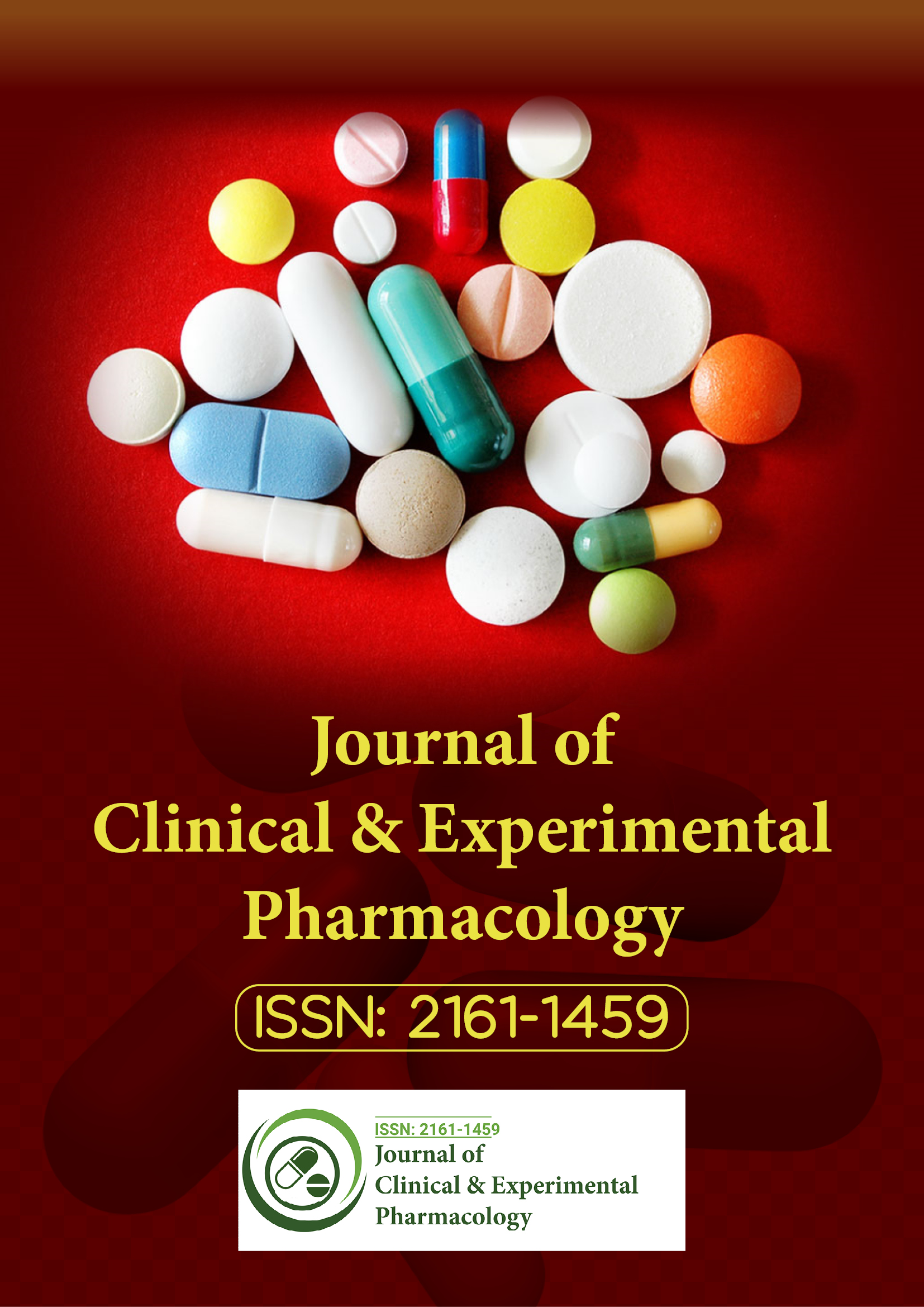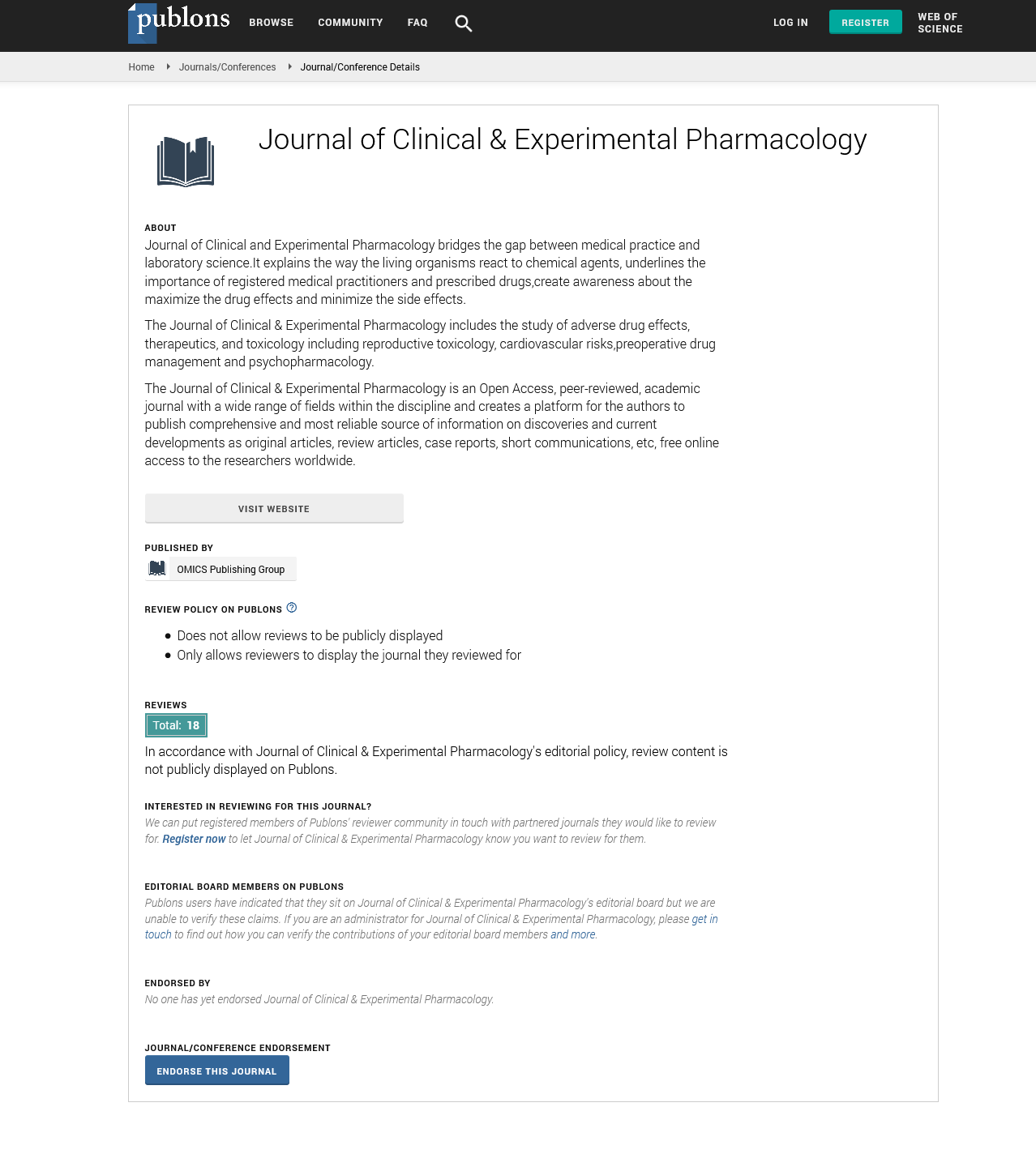Indexed In
- Open J Gate
- Genamics JournalSeek
- China National Knowledge Infrastructure (CNKI)
- Ulrich's Periodicals Directory
- RefSeek
- Hamdard University
- EBSCO A-Z
- OCLC- WorldCat
- Publons
- Google Scholar
Useful Links
Share This Page
Journal Flyer

Open Access Journals
- Agri and Aquaculture
- Biochemistry
- Bioinformatics & Systems Biology
- Business & Management
- Chemistry
- Clinical Sciences
- Engineering
- Food & Nutrition
- General Science
- Genetics & Molecular Biology
- Immunology & Microbiology
- Medical Sciences
- Neuroscience & Psychology
- Nursing & Health Care
- Pharmaceutical Sciences
Constitutive activity in the angiotensin II type 1 receptor: Discovery and applications
World Congress on Pharmacology
July 20-22, 2015 Brisbane, Australia
Hamiyet Unal2 and Sadashiva Karnik1
Scientific Tracks Abstracts: Clin Exp Pharmacol
Abstract:
The native angiotensin type 1 receptor (AT1R) displays low constitutive activity, which may contribute to pathologies such as cardiac hypertrophy in response to mechanical stress without requiring a natural or pharmacological agonist. Ligandindependent activation of the AT1R could arise in vivo due to factors such as the membrane environment, interaction with autoantibodies or interacting proteins, single nucleotide polymorphisms that increase expression and mechanical stretch. However, naturally occurring, disease causing gain-of-function mutations of AT1R are not known. Our lab engineered the first knowledge-based constitutively active mutant AT1R, by substituting Asn111:TM3 with a glycine that resulted in the highest basal activity of the receptor. We will discuss the structure-function basis of constitutive activation of AT1R and demonstrate a G-protein signaling bias in the N111G-AT1R mutant. We will provide mechanistic basis for trans membrane helical separation that leads to spontaneously active signaling conformation of AT1R based on our recent X-ray structure of human AT1R. We will describe a transgenic animal model expressing the N111G-AT1R mutant directed to endothelial cells. Our results demonstrate the usefulness of the N111G-AT1R mutant as a tool for elucidating physiological role of activated AT1R in different tissues. We will describe molecular mechanisms underlying inverse agonists of AT1R. Because the AT1R is a major therapeutic target in treating hypertension, cardiovascular and renal diseases, N111G-AT1R mutant is an invaluable resource for defining the pharmacology of this receptor. Finally, we will summarize independent studies that validate both mechanistic aspects of the N111G-AT1R mutant and its application in elucidating novel tissue-specific functions of AT1R.
Biography :
Hamiyet Unal completed his PhD in 2010 from Cleveland State University, USA under the supervision of Sadashiva Karnik, Professor, Department of Molecular Cardiology, Cleveland Clinic and Cleveland State University. She continued multi-disciplinary postdoctoral studies in Karnik Laboratory and has published several papers on angiotensin receptor structure and mechanism of signaling in reputed journals. Her seminal observations have contributed to basic concepts of GPCR activation mechanisms with emphasis on angiotensin receptor. She is currently an assistant professor in the Department of Pharmacology at Erciyes University, Turkey with continued affiliation with the Karnik Laboratory and Molecular Cardiology Department at Cleveland Clinic, USA.

